The Environmental Protection Agency (EPA) officially proposed today to rescind the so-called Clean Water Rule, established under President Obama in 2015. This action begins a process of unraveling years of work to protect some of the most critical streams and wetlands in our country. The agency is giving Americans only 30 days to weigh in on a rule that took years to craft. The Clean Water Rule was a scientifically sound set of regulations that made clear America’s headwater streams would be protected for water quality under the federal Clean Water Act. The rule also would have reaffirmed exemptions in existing law for landowners and agricultural operations. It was strongly supported by the vast majority of Americans who commented on it during its multi-year development process..
In contrast, today's action to rescind the rule jeopardizes 60 percent of stream miles in the U.S., those small tributaries (sometimes ephemeral) to larger rivers which provide important habitat for fish and wildlife and deliver clean water to some of our most treasured fishing grounds.
But fishing isn't the only thing at stake. This move impacts the sources of drinking water for 117 million people. That's one in three Americans whose drinking water originates in a stream that may no longer be protected.
Our access to clean water in this country is one of the things that sets us apart from many nations in the world. And it is up to protect the places that supply high quality water.
There's no doubt the Clean Water Rule has created much division. Trout Unlimited has seen that first-hand in working with many of our partners in agriculture. We understand and agree with the importance of getting this rule right, and support the exemptions granted to the ag community.
But as an organization that works daily to fix polluted streams and rivers -- and the fisheries such pollution has degraded or ruined -- we know too well how hard and expensive it is to fix something rather than protect it in the first place.
"Clean water is not a political issue," said Chris Wood, President and CEO of Trout Unlimited. "It is a basic right of every American. Water runs downhill and gravity works cheap, and never takes a day off. We all live downstream. To be effective, the Clean Water Act must be able to control pollution at its source, upstream in the headwaters and wetlands that flow downstream through communities to our major lakes, rivers, and bays. EPA’s action places the health of 60 percent of the stream miles in the U.S. at risk. Trout Unlimited intends to work with our hundreds of thousands of members and supporters to reverse course on this misguided direction."
The Clean Water Rule is a foundational American law, one meant to protect the health of our nation's citizens. It also helps ensure that our remaining cold water habitat can provide good habitat and fishing opportunity. Time is short: Let's get to work.






 Monday was the first full day of camp and after waking up, the kids went to the stream and pond at the ranch to learn about the entomology of the watershed. The kids took bug samples to learn about what the fish would be eating in the area and took water samples to determine the health of the stream and pond. After the sampling, students ate lunch and headed to nearby North Lake to fish for the afternoon. It wasn't long before kids started hooking into fish and in the first day over half of the kids had landed their first fish of the camp and for some, their first fish ever.
Monday was the first full day of camp and after waking up, the kids went to the stream and pond at the ranch to learn about the entomology of the watershed. The kids took bug samples to learn about what the fish would be eating in the area and took water samples to determine the health of the stream and pond. After the sampling, students ate lunch and headed to nearby North Lake to fish for the afternoon. It wasn't long before kids started hooking into fish and in the first day over half of the kids had landed their first fish of the camp and for some, their first fish ever. Over the first few days the kids had free time to tie flies and practice their fly fishing skills and on Wednesday they had a chance to hone in those skills and use the flies they have tied. The day started off by traveling to North Lake for the morning. While at North Lake kids were catching fish left and right and by halfway through the morning, everyone had caught a fish. After returning to the camp, the kids ate lunch and broke up into teams of three for some additional fishing. One group headed to some beaver ponds, another group fished the stream, and the third group fished a lake on the ranch property.
Over the first few days the kids had free time to tie flies and practice their fly fishing skills and on Wednesday they had a chance to hone in those skills and use the flies they have tied. The day started off by traveling to North Lake for the morning. While at North Lake kids were catching fish left and right and by halfway through the morning, everyone had caught a fish. After returning to the camp, the kids ate lunch and broke up into teams of three for some additional fishing. One group headed to some beaver ponds, another group fished the stream, and the third group fished a lake on the ranch property.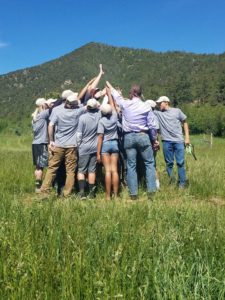 When the 15 campers arrived on June 11, there were nervous faces and uneasy feelings about what to expect for the upcoming week. But just a few days later on June 16 the campers had a hard time leaving one another. The friendships formed, the lessons learned, and the memories made will carry on forever and many students mentioned coming back in 2018.
When the 15 campers arrived on June 11, there were nervous faces and uneasy feelings about what to expect for the upcoming week. But just a few days later on June 16 the campers had a hard time leaving one another. The friendships formed, the lessons learned, and the memories made will carry on forever and many students mentioned coming back in 2018. This Spring, he graduated from Western State University in Gunnison majoring in Chemistry with an emphasis in Biochemistry. But he's leaving behind an incredible legacy of coldwater conservation leadership. In 2013, Adam founded The Gunnison Sockeyes, the first TU Costa Five Rivers collegiate club in the nation to found their club based on conservation rather than fly fishing. The club boasts over 160 members and has logged in excess of 220 man hours of service work in the Gunnison Watershed in the fields of Lake Trout Removal, Kokanee Salmon Spawning, Electroshocking, Stonefly Reintroduction and River Clean Ups.
This Spring, he graduated from Western State University in Gunnison majoring in Chemistry with an emphasis in Biochemistry. But he's leaving behind an incredible legacy of coldwater conservation leadership. In 2013, Adam founded The Gunnison Sockeyes, the first TU Costa Five Rivers collegiate club in the nation to found their club based on conservation rather than fly fishing. The club boasts over 160 members and has logged in excess of 220 man hours of service work in the Gunnison Watershed in the fields of Lake Trout Removal, Kokanee Salmon Spawning, Electroshocking, Stonefly Reintroduction and River Clean Ups. Growing up on the banks of the Mississippi and experiencing its periodic floods gave me no background for understanding the water scarcity issues of the west. When the mighty Miss and its tributaries flooded they used to let us older boys out of school and permit trustee crews from the state prison to help sandbag. It was usually a problem of too much water, so I was fascinated by the complexity of water law created by the scarcity of water and the mission of TU to conserve and correct the mistakes of the past just seemed to me to make manifest sense.
Growing up on the banks of the Mississippi and experiencing its periodic floods gave me no background for understanding the water scarcity issues of the west. When the mighty Miss and its tributaries flooded they used to let us older boys out of school and permit trustee crews from the state prison to help sandbag. It was usually a problem of too much water, so I was fascinated by the complexity of water law created by the scarcity of water and the mission of TU to conserve and correct the mistakes of the past just seemed to me to make manifest sense. My favorite fishing spot is any spot I happen to be in which harbors fish. I advocate carrying a flyrod in every vehicle because you never know when you will run into a fishing emergency! Although exotic locales beckon to many I have trouble getting too far away from my home rivers - and ponds. I flyrod a lot of local natural area ponds for warmwater species too. Also take a trip to Canada each June with a couple of RMF's founding fathers, but home waters are the preferred locales since they are close.
My favorite fishing spot is any spot I happen to be in which harbors fish. I advocate carrying a flyrod in every vehicle because you never know when you will run into a fishing emergency! Although exotic locales beckon to many I have trouble getting too far away from my home rivers - and ponds. I flyrod a lot of local natural area ponds for warmwater species too. Also take a trip to Canada each June with a couple of RMF's founding fathers, but home waters are the preferred locales since they are close.










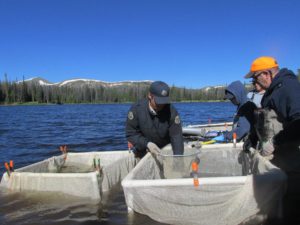 In the South Platte basin, Colorado TU and chapters worked to engage young, inner city, girls through the great outdoors by introducing them to fly fishing and conservation; CTU worked with Colorado Parks and Wildlife to reintroduce the Colorado state fish, Greenback Cutthroat Trout, to it's native watershed along the Front Range; Trout Unlimited tackled abandoned mine issues, and various chapters worked to repair their homewater streams from the devastating floods of 2013.
In the South Platte basin, Colorado TU and chapters worked to engage young, inner city, girls through the great outdoors by introducing them to fly fishing and conservation; CTU worked with Colorado Parks and Wildlife to reintroduce the Colorado state fish, Greenback Cutthroat Trout, to it's native watershed along the Front Range; Trout Unlimited tackled abandoned mine issues, and various chapters worked to repair their homewater streams from the devastating floods of 2013.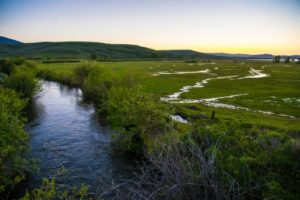 In the Colorado River basin, TU helped secure protections for the Roan Plateau and Thompson Divide from harmful oil and gas development, worked with local ranchers and farmers to improve the health of the Upper Colorado while enhancing agriculture water usage. TU also helped lead the Learning by Doing initiative that, among other things, secured $8 million in funds to protect and restore the Upper Colorado River.
In the Colorado River basin, TU helped secure protections for the Roan Plateau and Thompson Divide from harmful oil and gas development, worked with local ranchers and farmers to improve the health of the Upper Colorado while enhancing agriculture water usage. TU also helped lead the Learning by Doing initiative that, among other things, secured $8 million in funds to protect and restore the Upper Colorado River.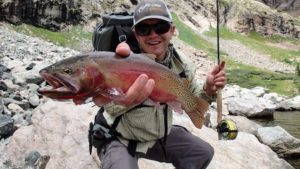 In the Rio Grande basin, Trout Unlimited worked to protect the Great Sand Dunes Cutthroat from potential changes in the environment. The Rocky Mountain Flyathlon came to Saguache for the annual race and fishing events that help raise money for Colorado TU's work in protecting native trout and their habitats. The local chapter and Trout Unlimited also worked to repair sections of the Conejos and ensure that winter flows were hospitable for trout.
In the Rio Grande basin, Trout Unlimited worked to protect the Great Sand Dunes Cutthroat from potential changes in the environment. The Rocky Mountain Flyathlon came to Saguache for the annual race and fishing events that help raise money for Colorado TU's work in protecting native trout and their habitats. The local chapter and Trout Unlimited also worked to repair sections of the Conejos and ensure that winter flows were hospitable for trout.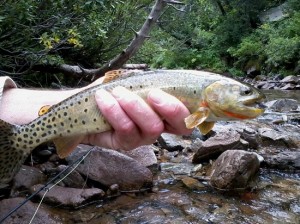 There is a small but dangerous movement brewing in this country that would transfer ownership of federal public lands to the states. TU and many other
There is a small but dangerous movement brewing in this country that would transfer ownership of federal public lands to the states. TU and many other 
